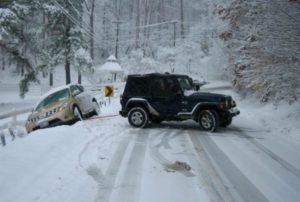Winter driving tips are essential to grasp for anyone traveling on roads and highways in the snowcapped mountains of California.
Driving in snowy conditions can be frustrating, tiring and sometimes hazardous.
Anyone who has driven in snow understands it can be a real challenge. Slippery, snowy roads are difficult to navigate and are even more difficult with traffic like motorist will encounter today when traveling to the Lake Tahoe region.

Below are some the California Department of Transportation (Caltrans) driving tips that will help keep you safe.
- Allow enough time: Trips to the mountains can take longer during winter than other times of the year, especially if you encounter storm conditions or icy roads. Get an early start and allow plenty of time to reach your destination.
- Keep your gas tank full: It may be necessary to change routes or turn back during a bad storm or you may be caught in a traffic delay.
- Keep windshield and windows clear: You may want to stop at a safe turnout to use a snow brush or scraper. Use the car defroster and a clean cloth to keep the windows free of fog.
- Slow down: A highway speed of 65 miles per hour may be safe in dry weather, but it can be an invitation for trouble on snow and ice. Snow and ice make stopping distances much longer, so keep your seat belt buckled and leave more distance between your vehicle and the vehicle ahead.
- Slippery surfaces: Bridge decks and shady spots can be icy when other areas are not. Remember to avoid sudden stops and quick direction changes.
- Be more observant: Visibility is often limited in winter by weather conditions. Slow down and watch for other vehicles that have flashing lights, visibility may be so restricted during a storm that it is difficult to see the slow-moving equipment.
- Stay alert: When stalled, stay with your vehicle and try to conserve fuel while maintaining warmth. Be alert to any possible exhaust or monoxide problems.
- Give snowplows room to work: A “strike team” may include several plow trucks, including Tow Plows and wing plows using multiple lanes on a major highway. Stay at least four (4) car lengths back from snowplows and snow removal equipment.
- Equipment operators: These drivers must focus on snow removal and cannot always watch out for motorists. Refrain from, or use extreme caution, when passing snow removal equipment.